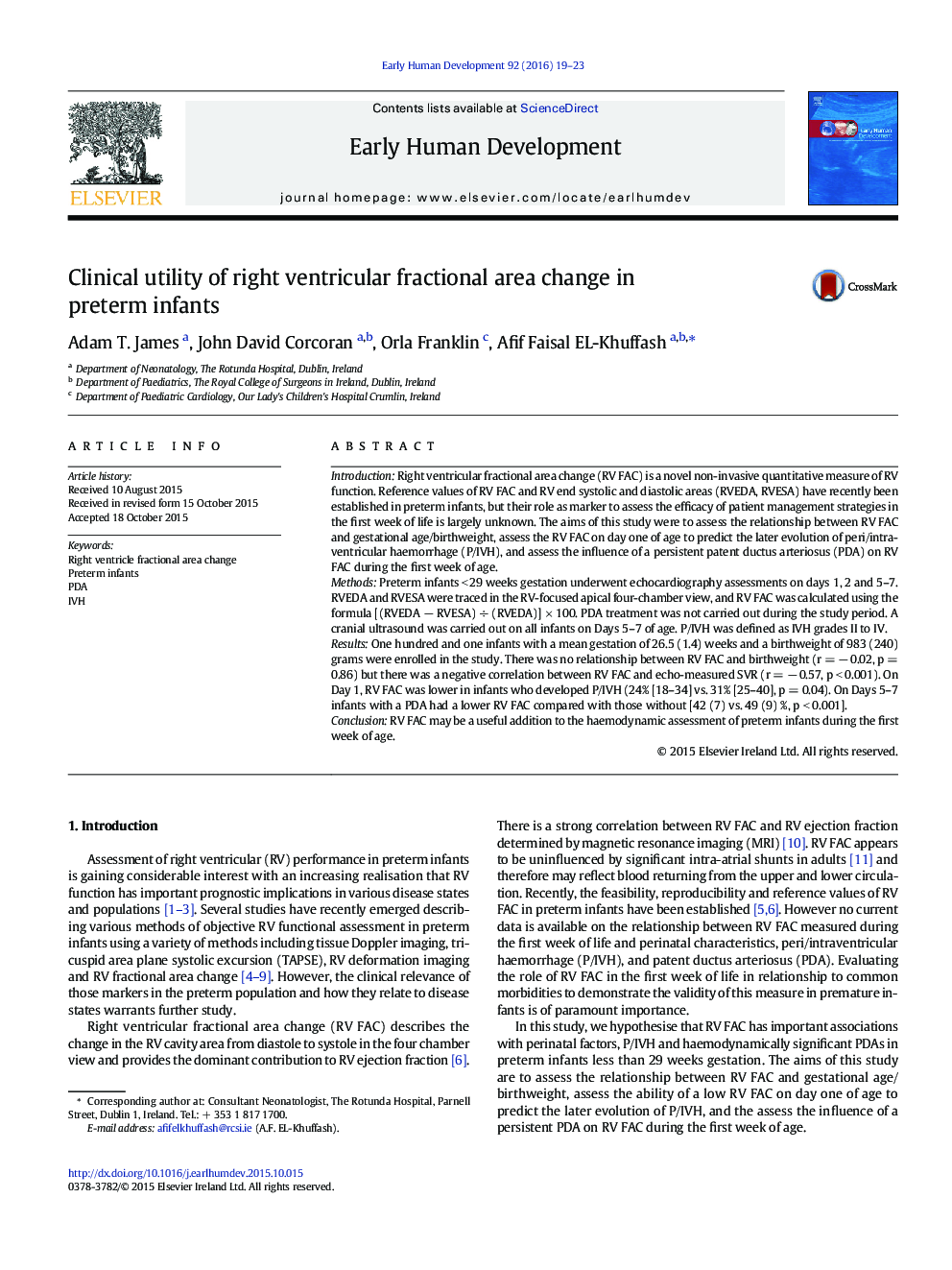| Article ID | Journal | Published Year | Pages | File Type |
|---|---|---|---|---|
| 3916351 | Early Human Development | 2016 | 5 Pages |
IntroductionRight ventricular fractional area change (RV FAC) is a novel non-invasive quantitative measure of RV function. Reference values of RV FAC and RV end systolic and diastolic areas (RVEDA, RVESA) have recently been established in preterm infants, but their role as marker to assess the efficacy of patient management strategies in the first week of life is largely unknown. The aims of this study were to assess the relationship between RV FAC and gestational age/birthweight, assess the RV FAC on day one of age to predict the later evolution of peri/intraventricular haemorrhage (P/IVH), and assess the influence of a persistent patent ductus arteriosus (PDA) on RV FAC during the first week of age.MethodsPreterm infants < 29 weeks gestation underwent echocardiography assessments on days 1, 2 and 5–7. RVEDA and RVESA were traced in the RV-focused apical four-chamber view, and RV FAC was calculated using the formula [(RVEDA − RVESA) ÷ (RVEDA)] × 100. PDA treatment was not carried out during the study period. A cranial ultrasound was carried out on all infants on Days 5–7 of age. P/IVH was defined as IVH grades II to IV.ResultsOne hundred and one infants with a mean gestation of 26.5 (1.4) weeks and a birthweight of 983 (240) grams were enrolled in the study. There was no relationship between RV FAC and birthweight (r = − 0.02, p = 0.86) but there was a negative correlation between RV FAC and echo-measured SVR (r = − 0.57, p < 0.001). On Day 1, RV FAC was lower in infants who developed P/IVH (24% [18–34] vs. 31% [25–40], p = 0.04). On Days 5–7 infants with a PDA had a lower RV FAC compared with those without [42 (7) vs. 49 (9) %, p < 0.001].ConclusionRV FAC may be a useful addition to the haemodynamic assessment of preterm infants during the first week of age.
